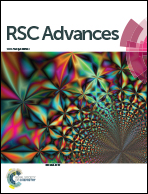In situ simultaneous reduction–doping route to synthesize hematite/N-doped graphene nanohybrids with excellent photoactivity†
Abstract
An in situ simultaneous reduction–doping strategy was carried out based on the hydrolysis of hexamethylenetetramine at the evaluated temperature to prepare hematite/N-doped graphene nanohybrids with excellent photocatalytic activity for phenol decomposition under visible light illumination.


 Please wait while we load your content...
Please wait while we load your content...